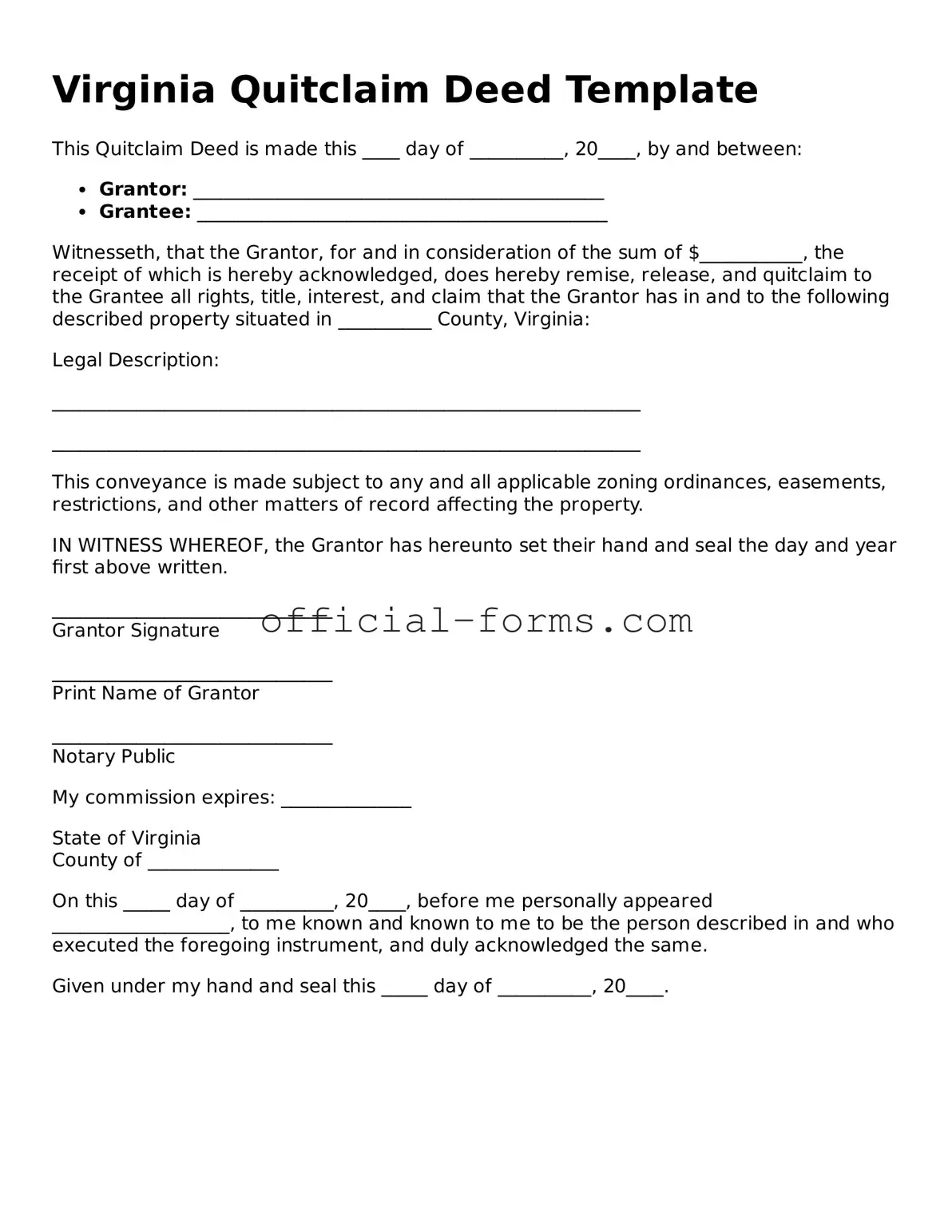In the realm of real estate transactions, the Virginia Quitclaim Deed serves as a vital tool for property owners looking to transfer their interest in a property without the complexities often associated with other types of deeds. This straightforward form allows individuals to relinquish their claim to a property, effectively passing on their rights to another party. It is particularly useful in situations such as transferring property between family members, clearing up title issues, or facilitating a divorce settlement. Unlike warranty deeds, which guarantee the grantor's clear title to the property, a quitclaim deed offers no such assurances, making it essential for both parties to understand the implications of the transfer. The form typically includes key details such as the names of the parties involved, a description of the property being transferred, and the signatures of the grantor and grantee. While the quitclaim deed is often simpler and quicker to execute, it is important for individuals to consider their specific circumstances and consult with a legal professional when necessary to ensure a smooth transaction.
